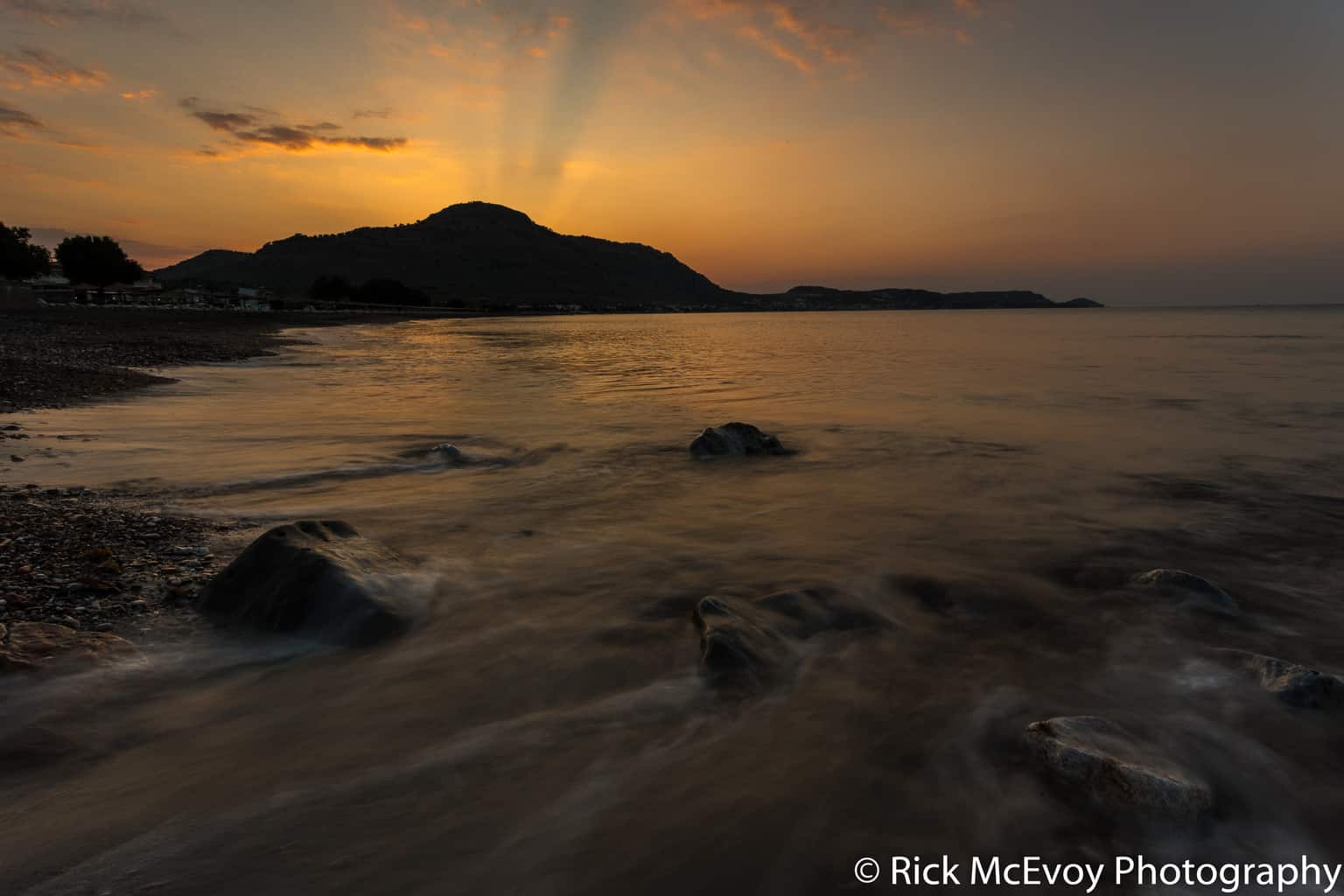Rhodes, Greece: Mastering AEB for Killer Sunrise Landscape Photography in Lardos Bay

Waking up early while on holiday might sound like a nightmare, but when the reward is a Rhodes sunrise like this one from Lardos Bay, Greece, it’s absolutely worth it. This is my favourite image from the trip, and it perfectly illustrates my core belief: Great landscape photography is 90% preparation and 10% execution.
1. The Critical Pre-Dawn Reconnaissance for Landscape Photography
The decision to get up at 5 a.m. wasn't a gamble; it was a strategy. I always conduct a quick scouting drive the day before any major landscape photography shoot to identify two things: the perfect foreground interest (the dark, wave-washed rocks here) and the best line of sight for the sunrise.
The last thing you want is to be rushing around in the dark looking for a composition. Preparation and planning eliminate stress and make for undeniably better shots, especially when dealing with the fleeting light of a Lardos Bay sunrise in Rhodes, Greece.
2. Minimal Kit, Maximum Results for Professional Photography
I was travelling light, proving you don't need a huge bag of gear to create stunning landscape photography work. My minimal kit included:
Camera: Canon 6D (A classic, reliable full-frame body)
Lens: Canon 17-40mm f/4L (My favorite wide-angle workhorse)
Support: Manfrotto Pixie tripod (light and low to the ground)
Trigger: One simple cable release
Working with this limited gear forces a photographer to focus purely on light and composition, not on gear choices. The 17-40mm is fantastic for capturing sweeping, immersive scenes like this one in Rhodes.
| Exposure | Purpose | Stop Adjustment | Settings |
|---|---|---|---|
| Image 1 | Mid-tones (Base Exposure) | 0 Stops | 1/6th second |
| Image 2 | Shadows (Rock/Water Detail) | +2 Stops | 0.6 second |
| Image 3 | Highlights (Sky Detail) | −2 Stops | 1/25th second |
3. Mastering the Three-Shot Auto Exposure Bracketing (AEB)
The key to preserving the incredible detail in the bright sun rays and the dark, flowing water is the technique of Auto Exposure Bracketing (AEB). This essential practice involves capturing multiple frames at different exposures, allowing us to blend them later to conquer the scene's wide dynamic range. It prevents the sky from being blown out while ensuring the dark foreground retains detail.
The native exposure for this scene was 1/6th second. I used the AEB function to automatically capture three bracketed images, two stops apart, all at ISO 100 and f/22:
By merging these three carefully exposed files in post-processing, I retained every bit of texture in the rocks while preserving the gorgeous crepuscular rays. This three-shot bracket is the most effective way to ensure nothing is lost—it records what the eye actually sees.
4. Dive Deeper: Master AEB (Audio and Text)
Want to truly master Auto Exposure Bracketing (AEB) and other essential photography concepts? I highly recommend checking out my podcast, The Photography Explained Podcast.
You can listen to the full discussion on Episode 160: "What Is Auto Exposure Bracketing (AEB)?" and read the accompanying detailed guide on the same page.
Practise and Intuition
My entire workflow—from scouting the location to knowing the exact exposures needed—is now intuitive. That level of confidence and consistency only comes with practice, practice, practice! If I can offer one piece of advice to aspiring landscape photographers, it’s to master your post-processing workflow until it feels like second nature.
This commitment to technical perfection, as demonstrated by mastering Auto Exposure Bracketing (AEB) for complex dynamic range scenes like the Rhodes sunrise, is the foundation of my professional work.
My photographic expertise is focused entirely on creating high-impact visual assets for businesses and brands, utilizing techniques like bracketing to control even the most challenging lighting conditions. I specialize in Architectural and Interior Photography, which demands careful attention to convergence, exposure, and shadow detail to truly capture the design and scale of commercial properties, hotels, and high-end residential developments throughout the South Coast.